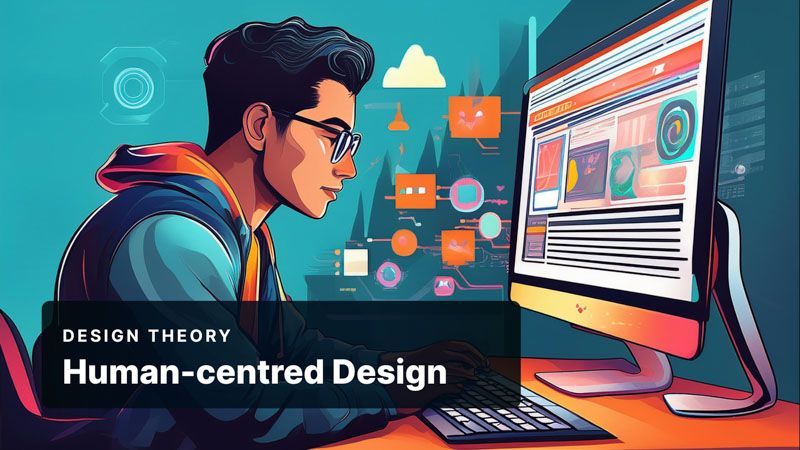Images
Published: November 10, 2024
Author: Rhys Dyson
Refresh Your Site Today
Great images can elevate a website’s design, but it’s equally important to ensure they don’t slow down your site. I specialise in optimising images for both aesthetics and performance. Let’s create a visually stunning website that keeps your audience engaged and performs flawlessly. Contact me now to get started!
Request a quote onlineImages in Web Design – Choosing, Editing, and Preparing Visuals for Maximum Impact
In web design, images are as important as typography and layout. They help convey your message, capture user attention, and set the overall tone of your website. Whether it's product photos, background visuals, or icons, well-chosen and well-edited images can elevate your web design to the next level.
In this blog, we’ll discuss how to select the right images for your website, how to prepare and edit them for optimal performance, and tips for integrating images into your design to enhance both functionality and aesthetics.
The Role of Images in Web Design
Images are more than just decorative elements—they have a functional purpose in web design. They can:
- Communicate your brand identity: Through the use of certain styles, colours, and subjects, images help reinforce your brand message and personality.
- Engage users: Visuals capture attention faster than text, making them a key tool for drawing users in.
- Enhance user experience: Carefully chosen images guide the user journey and make navigating the site easier and more intuitive.
When integrated well, images not only support the overall design but also strengthen user engagement and understanding of your content.
Selecting the Right Images for Web Design
Choosing the right image is the first step to successful visual design. Consider the following when selecting images:
- Relevance: Your images should be directly related to your content or the products and services you offer. Irrelevant or misleading images can confuse users and damage your credibility.
- Quality: High-resolution images create a professional look, but be careful—they can also slow down your site if not optimised properly.
- Style consistency: Use a cohesive visual style throughout your website. This includes matching the tone, colour scheme, and overall aesthetic. Whether you're going for a modern, minimalist design or a more playful, artistic look, ensure that your images reinforce this identity.
Tip: Use professional stock photos when you can’t source original images, but try to avoid overly generic visuals. Custom photography often feels more authentic and unique, helping you stand out from competitors.
Image Preparation for the Web
After choosing the right images, preparing them for web use is essential to maintain both design quality and website performance. Here’s how to do it effectively:
Image Formats
Different formats work best in different situations:
- JPEG: Ideal for photos and images with many colours. JPEGs compress well and offer smaller file sizes without sacrificing too much quality.
- PNG: Best for images requiring transparency or for graphics like logos and icons. However, PNG files are generally larger, so use them sparingly.
- SVG: Ideal for vector graphics like logos or illustrations. These are scalable without losing quality and usually have smaller file sizes.
- WebP: A newer format that offers better compression than JPEG or PNG without loss of quality. If your platform supports it, it’s worth considering.
Resolution and File Size
Images should be high enough resolution to look sharp on any device but optimised to avoid slowing down your site. Resize images to the exact dimensions needed on your page—uploading oversized images can impact load times unnecessarily.
Tip: Aim for an image size between 150-300KB where possible, and compress files using tools like TinyPNG to reduce the file size without losing noticeable quality.
Alt Text and Accessibility
Always include alt text for your images. Alt text not only improves accessibility for visually impaired users but also boosts your site’s SEO. It provides context for search engines and helps your website rank better for relevant keywords.
Image Compression
Compressing images is a must to maintain fast load times. Use tools that strike the right balance between quality and file size. Additionally, use lazy loading techniques to only load images as users scroll through the page, which improves page speed and user experience.
Integrating Images into Your Web Design
Images should enhance your design without overpowering it. Here are some key principles for integrating images effectively:
Balance and Composition
When placing images on a page, balance them with your text and other design elements. Use white space to ensure your images don’t crowd the layout, and align images with text to guide the user’s eye. Consider how an image’s shape and colour interact with nearby elements.
Tip: Use exaggerated space around important images to highlight them and increase their visual impact.
Focal Points
Every image has a focal point—the area that draws the most attention. Align this focal point with the most important message on the page. For example, in a hero image, the focal point should naturally direct the user toward the call to action.
Image Alignment and Grids
Proper alignment creates a harmonious and professional look. Use grids as a loose guide to maintain consistency and rhythm throughout your layout. Although strict symmetry is not always necessary, aligning images and other elements helps create a sense of order.
Pro Tip: Experiment with asymmetry in some areas to add a dynamic feel to your site while maintaining overall balance.
Editing for the Web: Post-production Tips
Even if you’ve chosen great images, editing them properly ensures they perform optimally on your site. Here are some steps to refine images for web use:
Colour Correction
Ensure that colours are consistent and align with your site’s palette. Tools like Photoshop or Lightroom allow for easy adjustments to contrast, brightness, and saturation. Correcting colours also ensures that your images look good across different devices and displays.
Retouching and Enhancements
Simple retouching can dramatically improve the professionalism of an image. Clean up distractions, remove unwanted objects, and fix imperfections. For product photos, retouching helps make the items stand out more vividly.
Sharpening
For web, subtle sharpening can make images pop, particularly after compression. However, don’t overdo it, as too much sharpening can make images appear unnatural.
Background Removal and Transparency
Sometimes, removing backgrounds from images (especially product images) helps them integrate better into the design. Transparent PNGs are particularly useful for logo placement or overlaying images on colourful backgrounds.
Testing Across Devices
Once your images are edited and integrated into your design, always test them across multiple devices and screen sizes to ensure they look sharp and load efficiently on mobile, tablet, and desktop.
Using Images to Reinforce Branding
In web design, imagery should reinforce your brand identity. The visual style you choose—whether through photography, illustration, or iconography—can communicate your values and tone of voice. Consider using a consistent filter or colour treatment across all images to create cohesion.
Tip: Select images that align with your website’s personality. For instance, a tech company may use clean, modern imagery, while a lifestyle blog might favour vibrant, emotive photos.
Elevate Your Web Design with Images
Images are a powerful tool in web design, enhancing the user experience and supporting your brand identity. By choosing relevant, high-quality visuals, optimising them for performance, and integrating them seamlessly into your design, you can significantly improve the impact of your website.
However, beautiful images should not come at the expense of website performance. In our next blog, we'll delve deeper into image optimisation and performance, discussing how to strike the right balance between visual quality and site speed to ensure your images not only look great but also keep your website running smoothly.


